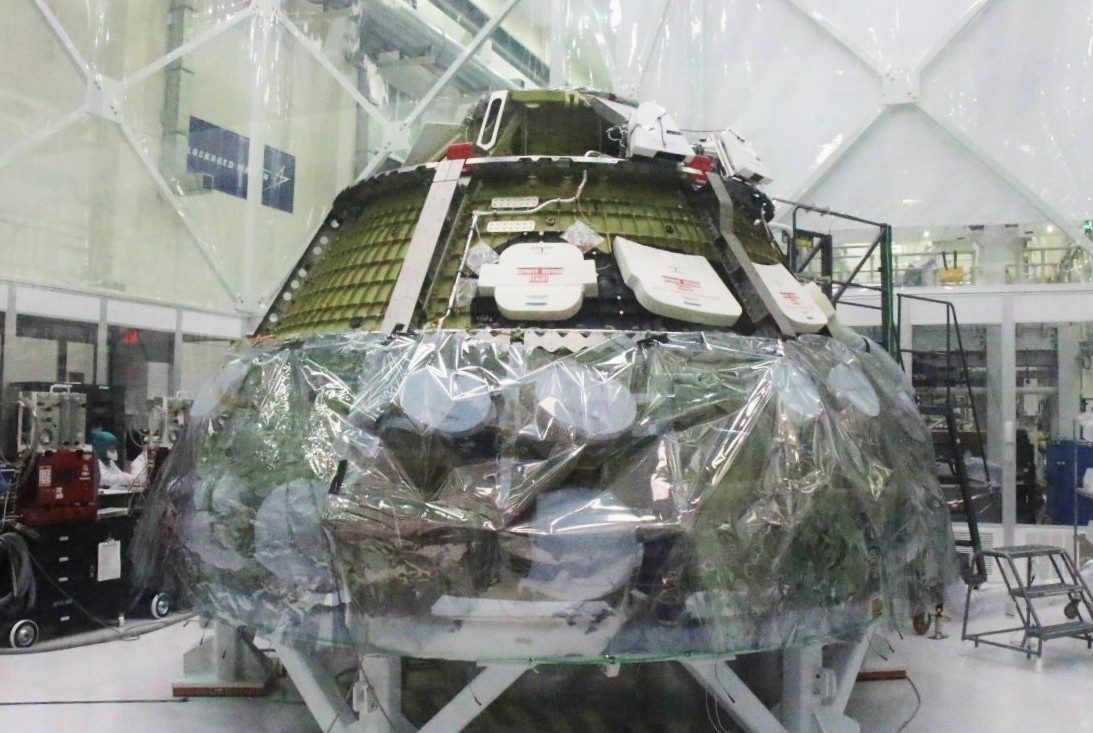The Orion spacecraft that will carry astronauts to the Moon powered-on its computers for first time
For the first time in its development, Lockheed Martin engineers and technicians at NASA’s Kennedy Space Center powered on NASA’s Orion crew module for the Artemis II mission. Designed for human deep space exploration, this vehicle will be the first Orion to fly to the Moon with astronauts onboard.
A major milestone for the program, the initial power-on activity was the first time the two vehicle management computers and the eight power and data units were installed in the crew module, loaded with flight software, and tested.
Functional testing of these core avionic systems, thought of as the “brain and heart” of the Orion capsule, is the first step in testing all of the crew module subsystems. Some of the initial tests performed included power distribution, command and data handling, and video functional testing. Preliminary data indicates these systems performed smoothly.
“Firing-up the avionics inside a spacecraft that will send humans back to the Moon for the first time in 50 years is a significant event,” said Scott Modesitt, Artemis II mission manager for Lockheed Martin. “Our test team and flight systems all did their jobs and performed expectedly well during the test. There’s much more testing in the weeks and months ahead, but everything so far is looking great.”
Orion’s vehicle management computers have more computing power than any previous spacecraft designed for humans: 20,000 times faster than Apollo and 25 times faster than the International Space Station (ISS). Orion’s state-of-the-art data network is triple redundant and allows the main computers to communicate with the other avionic components using a gigabit ethernet technology that can move data 1,000 faster than systems used on the space shuttle and ISS.

With the successful initial power on behind them, engineers and technicians will now continue integrating the many components that make up the spacecraft’s complex avionics suite. Over the course of the next few months, as each system is installed, the team will perform thorough functional tests.
Some of the non-core avionic components on Artemis I will be reused on Artemis II such as guidance navigation and control, and radio communications antennas and transponders. The video processing unit will also likely be reused. These elements will be removed and checked out after Artemis I performs its historic mission later this year and then installed onto Artemis II.
The amount of components and systems reused will dramatically increase from mission to mission and will eventually include reusing the pressure vessel and heat shield, bringing substantial cost savings—upwards of 50 percent per mission.
The Artemis II Orion will be flying systems not flown on Artemis I. Many of these are elements that will be used directly by the astronauts such as displays and controls and environmental control and life support systems. They will be installed in early fall of this year.
“The Artemis I mission will prove out the design of this new exploration-class spaceship that will transport humans farther into deep space than ever before, for longer periods of time,” said Modesitt.




